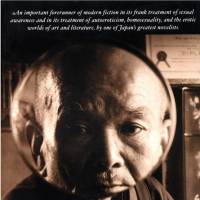Ogai Mori was either a very fearless writer or someone confident enough to believe his literary status would insulate him against the fallout from publishing a novel guaranteed to raise the eyebrows of even the most enlightened Meiji Era (1868-1912) reader.
Vita Sexualis, by Ogai Mori Translated by Kazuji Ninomiya & Sanford Goldstein.
TutTLE classics, Fiction.
Intrigued by the topic of sexual desire and its role in the modern age, Mori set about writing a work of literature in which his main character, Shizuka Kanai, a professor of philosophy, attempts to write a history of his own sexual development. The resulting chronicle, from a childhood encounter with an erotic woodblock print, to an evening spent in young adulthood with a courtesan, is narrated in the manner of a serious and considered inquiry. For contemporary readers now, Mori's novel provides valuable descriptive passages of Meiji Era Tokyo. Visiting Asakusa, a district known for its association with the sacred, Kanai passes old men and women on bent knees, their bodies "like lobsters as they muttered their incomprehensible prayers." In an area also known as a pleasure quarter, he encounters archery shops, where he is struck to "find in each of these shops a woman whose face was covered with white paint." These long gone archery galleries were tents known as fronts for brothels.
This coming-of-age book with an analytical slant had a profound influence on later Japanese writers who, in a more liberal climate, were able to kick down some of the doors Mori had opened.
Each week "Essentials" introduces a work of fiction that should be on the bookshelf of any Japanophile.



